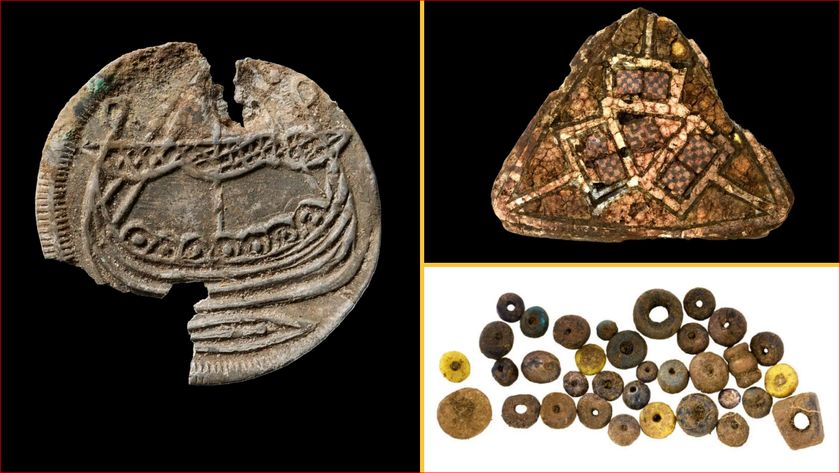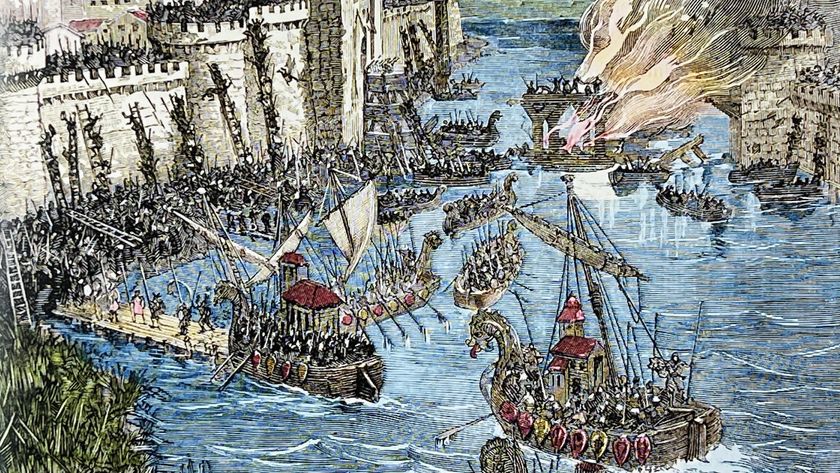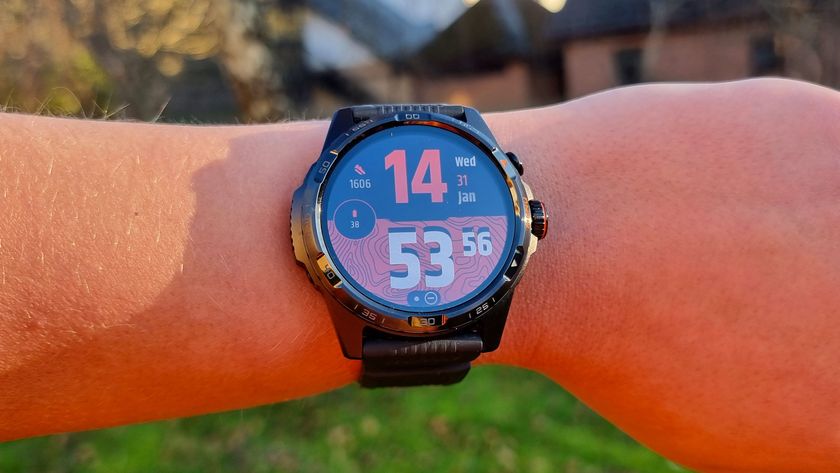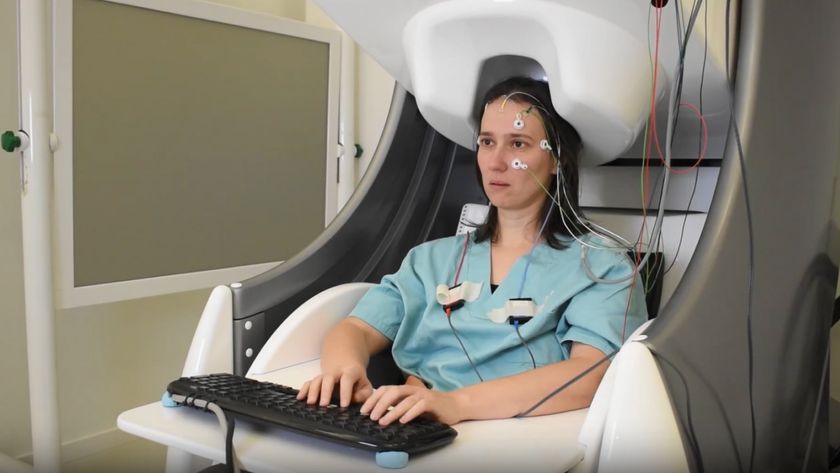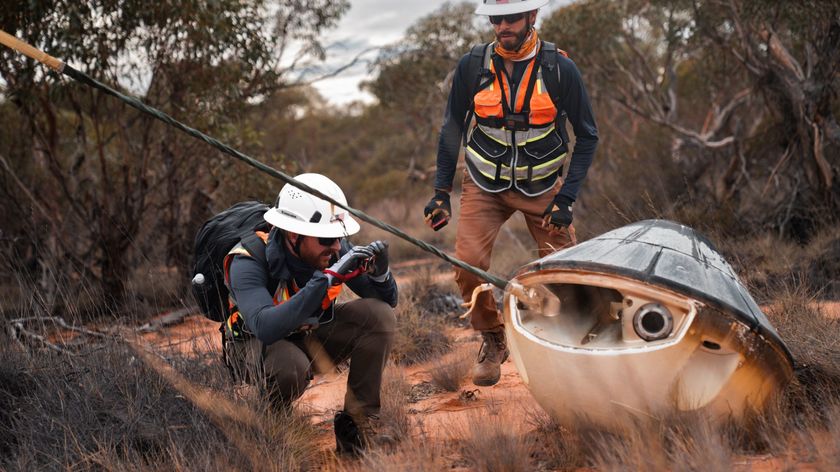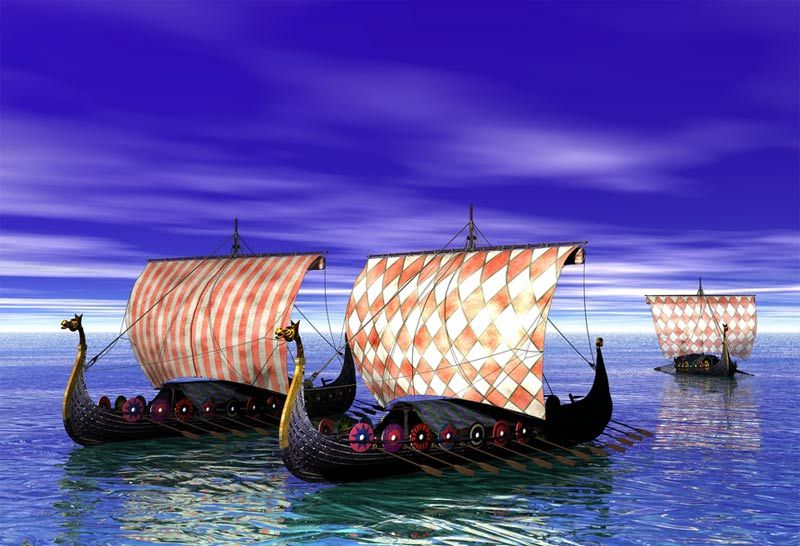
Viking graves in Norway contain a grisly tribute: slaves who were beheaded and buried along with their masters, new research suggests.
In Flakstad, Norway, remains from 10 ancient people were buried in multiple graves, with two to three bodies in some graves and some bodies decapitated. Now, an analysis reveals the beheaded victims ate a very different diet from the people with whom they were buried.
"We propose that the people buried in double and triple burials might have come from very different strata of society, and that slaves could have been offered as grave gifts in these burials," study co-author Elise Naumann, an archaeologist at the University of Oslo in Norway, wrote in an email.
Viking age
From about the 790s until about A.D. 1100, the Vikings were fierce, sea-faring raiders and often took slaves as booty. But this vicious lifestyle wasn't a full-time job. In everyday life, many Vikings were actually farmers, relying on slaves, or thralls, for agricultural work. Though some thralls were treated well, many were forced to endure backbreaking physical labor, Naumann said. Women were often used as sex slaves, and any children who resulted could either be considered the master's children or treated as slaves themselves. [Fierce Fighters: 7 Secrets of Viking Seamen]
The Viking burials were first discovered in the early 1980s, but only partially excavated at the time. The ancient graves were partly damaged by modern farming and contained just a few grave artifacts, such as an amber bead, some animal bones and a few knives. At the time, archaeologists noticed that four of the bodies were beheaded whereas the rest were intact.
That led many to conclude that the decapitated bodies were those of slaves sacrificed and buried with their masters.
Sign up for the Live Science daily newsletter now
Get the world’s most fascinating discoveries delivered straight to your inbox.
Different classes
To bolster that notion, Naumann and her colleagues analyzed the skeletons' mitochondrial DNA, which is passed on through the maternal line. The team found that bodies buried together were most likely not related, at least on the maternal side.
Next, they analyzed the ratio of carbon and nitrogen isotopes, or elements with different molecular weights, in the bones of the ancient Scandinavians.
Because food that comes from the sea or the land contains different proportions of heavy and light isotopes of carbon and nitrogen, the concentration of these chemicals in bones can reveal the dietary history of a people.
Results showed the beheaded people ate more fish protein, whereas the others ate land-based protein sources, such as meat and dairy products. That suggests the people buried together came from very different strata of society.
Grave gifts
Naumann proposes the beheaded victims were slaves who were sacrificed as gifts to be offered in death on behalf of their masters. Though such human sacrifice was uncommon in Viking society, it wasn't unknown.
"There are other examples of sacrifice in burials, where individuals had tied hands and feet and were sometimes beheaded, or in other ways treated in ways that indicates sacrifice," Naumann said. "It is assumed that such persons were grave gifts, and would follow their masters in death. One historical account from Ibn Fadlan (an Arab traveler who chronicled his journeys) describes how a slave woman volunteered to follow her master — a Viking chieftain — in the grave."
The find will be detailed in a forthcoming issue of the Journal of Archaeological Science.
Follow Tia Ghose on Twitter and Google+. Follow LiveScience @livescience, Facebook & Google+. Original article on LiveScience.

Tia is the managing editor and was previously a senior writer for Live Science. Her work has appeared in Scientific American, Wired.com and other outlets. She holds a master's degree in bioengineering from the University of Washington, a graduate certificate in science writing from UC Santa Cruz and a bachelor's degree in mechanical engineering from the University of Texas at Austin. Tia was part of a team at the Milwaukee Journal Sentinel that published the Empty Cradles series on preterm births, which won multiple awards, including the 2012 Casey Medal for Meritorious Journalism.
